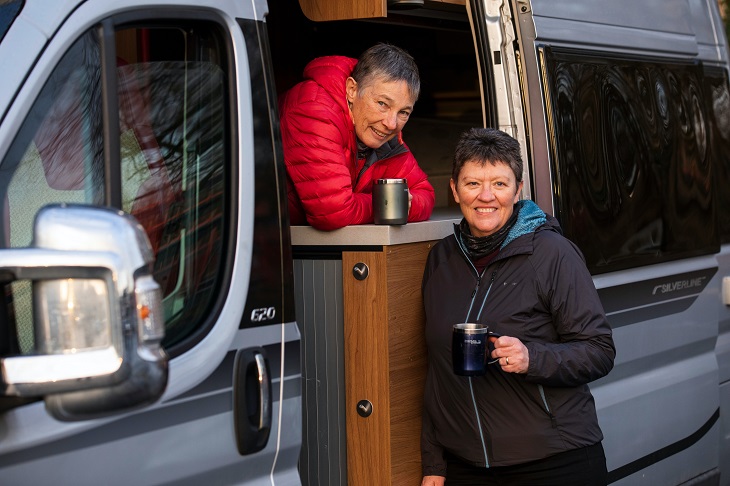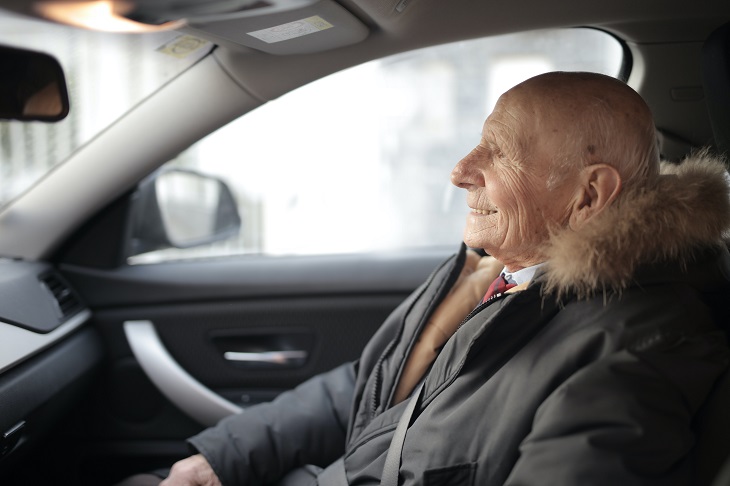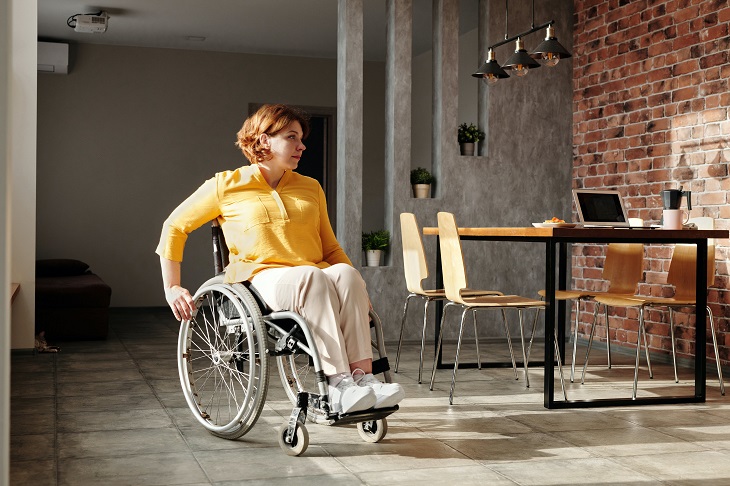Living with disabilities or mobility issues can present unique challenges, but it doesn’t mean you can’t strive for improved mobility and quality of life. Whether you use a wheelchair, walker, or cane, or have limited mobility for other reasons, cultivating healthy habits can significantly enhance your mobility and overall well-being.
In this comprehensive guide, we’ll explore 20 habits specifically tailored to individuals with disabilities and mobility issues. However, embarking on this journey requires more than just a list of habits – it demands a proactive approach and a commitment to creating sustainable daily routines that prioritize your well-being.
Before diving into the specifics of these habits, let’s explore the techniques and strategies that can help you establish and maintain daily mobility improvement habits. Laying this groundwork will help you be better equipped to navigate the challenges ahead and to enhance your mobility and a more fulfilling life.
Getting Started: Creating Daily Habits for Improved Mobility
Creating a daily habit to improve mobility can be both empowering and rewarding. However, getting started and staying consistent can sometimes feel daunting. Here are some practical steps to help you establish and maintain daily habits for improved mobility:
- Set Clear Goals: Begin by defining specific, achievable goals related to improving your mobility. Whether it’s increasing flexibility, enhancing balance, or reducing joint pain, having clear objectives will give your daily habits purpose and direction. Start Small: Break down your larger mobility goals into smaller, manageable tasks. Begin with simple habits that you can easily incorporate into your daily routine, such as stretching for 10 minutes each morning or taking short walks around your home.
- Create a Routine: Consistency is key when it comes to building habits. Establish a daily routine that includes dedicated time for mobility-enhancing activities. Whether it’s first thing in the morning, during breaks throughout the day, or before bedtime, find a time that works best for you and stick to it.
- Use Reminders: Set reminders or alarms on your phone or calendar to prompt you to engage in your mobility habits. These reminders can help reinforce your commitment and prevent you from forgetting to prioritize your mobility goals amidst a busy schedule.
- Start Slowly and Progress Gradually: Avoid the temptation to dive into intense workouts or lengthy exercise sessions right away, especially if you’re just starting or have mobility limitations. Begin with gentle movements and gradually increase intensity or duration as your strength and confidence grow.
- Track Your Progress: Keep track of your daily habits and progress toward your mobility goals. Whether it’s using a journal, mobile app, or calendar, documenting your efforts and accomplishments can provide motivation and accountability.
- Stay Flexible: Be prepared to adapt your routine and habits as needed based on your evolving needs and circumstances. If certain activities become too challenging or need modification, don’t hesitate to adjust your approach or seek guidance from a healthcare professional.
- Seek Support: Don’t hesitate to enlist the support of family members, friends, or healthcare professionals in your journey toward improved mobility. Having a support system can provide encouragement, motivation, and practical assistance when needed.
- Celebrate Successes: Acknowledge and celebrate your achievements, no matter how small they may seem. Whether it’s mastering a new exercise, increasing your flexibility, or experiencing reduced pain, every milestone is a testament to your dedication and progress.
- Stay Patient and Persistent: Building new habits takes time and patience, and setbacks are a natural part of the process. Stay committed to your goals, stay patient with yourself, and remain persistent in your efforts to improve your mobility and overall well-being.
By following these steps and a proactive mindset, you can lay the foundation for daily habits that support and enhance your mobility, independence, and overall quality of life. Remember that every small step forward is a step in the right direction toward achieving your mobility goals.
Here are some tips to get you started.
Habits to Improve Mobility
Stay Active Within Your Abilities
Regular physical activity is crucial for maintaining mobility and preventing muscle atrophy. Consult with a physical therapist or healthcare provider to identify safe exercises that align with your abilities. Even simple movements like stretching, seated exercises, or wheelchair-friendly workouts can make a significant difference.
Practice Proper Posture
Good posture is essential for optimizing mobility and reducing the risk of strain or injury. Whether you’re sitting or standing, focus on aligning your spine, shoulders, and hips. Utilize supportive cushions or adaptive equipment to maintain proper posture throughout the day.
Utilize Assistive Devices
Using tools like wheelchairs, walkers, canes, or scooters can really help you move around better and do things on your own. It’s important to make sure these tools fit you well and are in good condition so they can work their best. Taking care of your assistive devices can make a big difference in how much they help you get around and do things independently.
Engage in Regular Stretching
Incorporate daily stretching routines to improve flexibility and range of motion. Focus on stretching major muscle groups, joints, and areas prone to stiffness. Stretching can alleviate discomfort and enhance mobility over time.
Strengthen Core Muscles
A strong core is the foundation for stability and mobility. Include exercises that target core muscles, such as abdominals, obliques, and lower back muscles. Strengthening your core can improve balance and support proper posture.
Prioritize Balance Training
Balance exercises are crucial for preventing falls and maintaining mobility. Practice standing on one leg, heel-to-toe walking, or utilizing balance boards under the guidance of a physical therapist. Incorporate balance training into your routine to enhance stability and confidence.
Maintain a Healthy Weight
Excess weight can exacerbate mobility issues and strain joints. Focus on maintaining a healthy weight through a balanced diet and regular exercise. You can consult with a nutritionist or dietitian to develop a personalized meal plan that supports your mobility goals.

Stay Hydrated
Proper hydration is essential for overall health and mobility. Aim to drink an adequate amount of water throughout the day, especially if you’re engaging in physical activity. Dehydration can lead to muscle cramps and fatigue, hindering mobility.
Get Sufficient Sleep
Quality sleep is vital for muscle recovery and overall well-being. Aim for 7-9 hours of restful sleep each night to support mobility and cognitive function. Check with your professional healthcare provider how many hours of sleep you aim for depending on your mobility. You can also create a relaxing bedtime routine and optimize your sleep environment for comfort.
Practice Mindful Movement
Practicing mindfulness means paying attention to how your body feels and moving in a way that helps you feel calm and relaxed. You can try activities like tai chi, yoga, or meditation to help you become more aware of your body and reduce stress. These practices can also help you feel more relaxed, which can make it easier to move around and do things without feeling tense or uncomfortable.
Use Proper Body Mechanics
Pay attention to your body mechanics when performing daily tasks to prevent strain or injury. Lift heavy objects using your legs, maintain a neutral spine when sitting or standing, and avoid overexertion. Utilize adaptive equipment or ask for assistance when needed.
Take Regular Breaks
Prolonged periods of sitting or standing can contribute to stiff muscles and decreased mobility. Take regular breaks to stretch, change positions, or engage in gentle movement throughout the day. You can set reminders if necessary to encourage breaks.
Incorporate Mobility Aids
Explore the use of mobility aids such as ramps, handrails, and grab bars to enhance accessibility in your home and community. Modifying your environment can facilitate safer and more independent mobility.
Stay Consistent with Therapy
If you’re undergoing physical therapy or rehabilitation, consistency is key to achieving optimal results. Attend therapy sessions regularly, follow prescribed exercises, and communicate any concerns or progress with your therapist.
Practice Joint Protection Techniques
Protect your joints from unnecessary strain by practicing joint protection techniques. Avoid repetitive motions, use ergonomic tools and assistive devices, and distribute tasks evenly to minimize stress on your joints.
Invest in Supportive Footwear
Proper footwear can significantly impact mobility and reduce the risk of falls. Choose shoes with adequate support, cushioning, and stability to accommodate your specific needs. Consider custom orthotics or shoe modifications for additional comfort and support.
Stay Mindful of Environmental Hazards
Be aware of potential hazards in your home and community environment that may impede mobility, such as uneven surfaces, cluttered walkways, or slippery floors. Take proactive measures to address these hazards and ensure a safe and accessible environment.
Stay Socially Active
Spend time with people you like and do things you enjoy. Being around friends, family, and others in your community can make you feel happier and more connected. So, try to stay involved in activities and spend time with people who make you feel good. This can help you feel like you belong and have people who support you, which is good for your mood and can also help you move around better.
Practice Relaxation Techniques
When you feel stressed or tense, it can make it harder to move around and make your muscles feel even tighter. But there are ways to help your body relax and feel better. Try doing things like taking deep breaths, slowly relaxing each part of your body, or imagining yourself in a calm and peaceful place. These relaxation techniques can help your muscles loosen up and feel less tight, so you can move around more easily and comfortably.
Set Realistic Goals
Establish achievable goals related to mobility and track your progress over time. Celebrate small victories and adapt your habits as needed to continue progressing toward your mobility goals. Remember that improvement takes time and consistency.
A technique that can help you set clear goals is the SMART framework: specific, measurable, achievable, relevant, and time-bound. Specificity ensures clarity in what you aim to achieve, measurability allows for tracking progress, achievability keeps goals realistic, relevance ties them to your overall objectives, and setting deadlines provides accountability and motivation. For example: a SMART goal could be to increase walking distance by 25% within three months. This goal is specific, measurable, achievable, relevant, and time-bound as it focuses on enhancing mobility through a quantifiable increase in walking ability within a set timeframe. By tracking progress and gradually increasing distance, this goal provides a clear target for improving mobility and overall well-being.
Achieve Greater Mobility with These Habits
Improving mobility with disabilities or mobility issues requires dedication, patience, and a proactive approach to self-care. By cultivating these 20 healthy habits tailored to individuals with disabilities and mobility issues, you can experience greater independence, strength, and mobility. Before diving into the 20 habits outlined in this guide, it’s essential to establish a foundation for success by creating daily habits for improved mobility.
Using techniques such as setting clear goals with the SMART framework, starting small, establishing a routine, using reminders, progressing gradually, tracking progress, staying flexible, seeking support, celebrating successes, and remaining patient and persistent, you can lay the groundwork for lasting positive change. Whether it’s increasing flexibility, enhancing balance, or reducing joint pain, these habits offer a comprehensive approach to improving mobility and overall well-being. Remember, every small step forward is a significant achievement on your journey toward improved mobility and independence.
Remember to always consult with healthcare professionals, therapists, and mobility specialists as needed to tailor these habits to your specific needs and abilities.
Need more information on overcoming challenges? From tips for independent mobility to supporting loved ones with mobility challenges, we offer a useful bank of detailed topics on the Dr Handicap blog. Check it out today!
Featured image by Drew Beamer on Unsplash.


